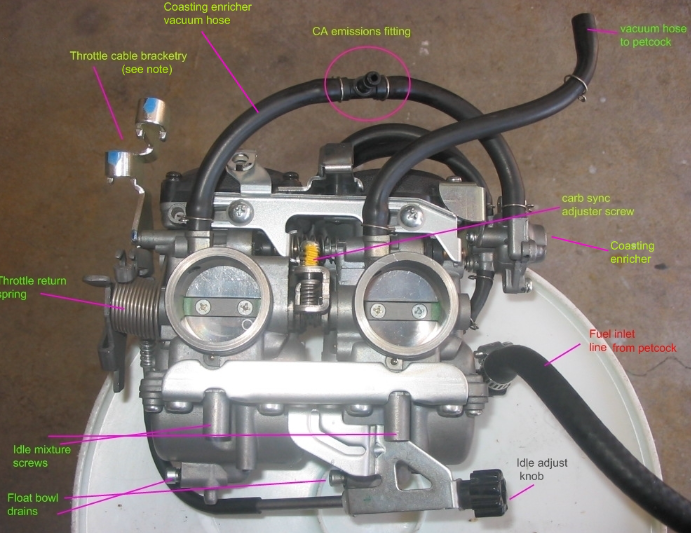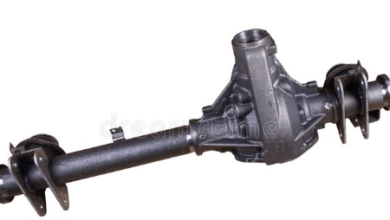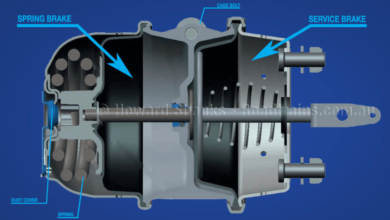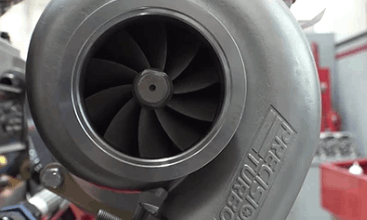Carburetor Hoses Diagram – Explanation with Other Components
Carburetor is a very important part of internal combustion engines. Their primary duty is to provide the required amount of air-fuel mixture inside the engine. Some people are very interested in the working principle of the carburetor. And with the carburetor hoses diagram, we will explain how a complex carburetor works.
Explanation of Carburator Hoses Diagram

Thanks to the Ninjette forum users, we have this useful carburetor hoses diagram. And we will try to explain this diagram in detail.
As you can see above, there is a complex carburetor that a complex automotive engine can have. And this is a very good example that we can explain all the parts without any problem. Thanks to these people, they explained all the important details and parts. And also, we can see all the hoses that are attached to the carburetor system.
What is Throttle Return Spring?
Once you press the gas pedal, you pull the throttle of the carburetor which brings much more air inside the system. And along with the air, more fuel is taken from the tank. And this rich air-fuel mixture, the power, and rev of the engine increase.
This throttle is connected to the throttle return spring which takes the throttle to its position back when you release the gas pedal. And make it possible for the engine to run at idle.
Throttle Cable Bracketry
Also as you see above, you can see a throttle cable bracket. This is the section of the carburetor where the throttle cable is attached and contained securely. The throttle cable is the cable that connects the gas pedal to the carburetor. And this bracket is make the connection of this throttle cable to the carburetor.
Coasting Enricher Vacuum Hose
This is the first hose on the carburetor hoses diagram. This is a small hose that is generally connected to the carburetor. And this hose provides the required amount of fuel in the decelerating of the car. Once the car decelerates, the throttle is closed which prevents the extra air inside the engine. So, this can cause a stall or engine hesitation and power loss.
To prevent this problem, a vacuum hose creates the vacuum that opens the valves and provides the required fuel to prevent the stall and work the engine smoothly in the vehicle coasting or decelerating.
As you see above it is connected to the coasting enricher valve at the bottom of the carburetor. The enriching fuel comes from there.
CA Emissions Filing
In California, the regulations and laws about the emissions of internal combustion engines are much more stringent than the other states. Because of it, to meet the regulations, there are additional technologies are used. One of these technologies is the CA emissions filtering system. These systems regulate the total fuel that comes to the carburetor that makes additional help to meet the strict emission regulations. So, they generally include a range of technologies in genera such as advanced catalytic converters, oxygen sensors, etc.
Vacuum Hose to Petcock
This is another hose that you can see in the picture. This is the vacuum hose that provides fuel to the carburetor system. In the intake stroke of the engine, a vacuum is created. Because of this vacuum, the petcock valve is opened and makes it possible to intake air inside the engine and carburetor system. Otherwise, the petcock system is closed in general.
This is the general working principle of the vacuum hose in general. And vacuum hose is one of the most important hoses that connect to the carburetor system.
Carburator Sync Adjuster Screw
It is also a very important part that car mechanics are using in general. In some carburetor systems like this one, there are multiple air intakes. For example in this picture, there are 2 valves that it takes air inside the system. This air is generally feeding the different engine cylinders.
So, these valves must take the same amount of air to run the engine smoothly and without any problem. With this screw, the mechanic can adjust the valve caps to take the same amount of air inside the system once the driver pushes the gas pedal.
In general, it is not an easy thing to adjust. You need to use gauges that measure the air flow. The car mechanic attaches the gauge and measures the air flow. And by adjusting this screw, adjust the total air that comes into the engine.
Fuel Inlet Line from Petcock
This is a common hose that brings fuel to the carburetor system. Once you look at the carburetor hoses diagram, this is the main hose that connects to the system of your engine. So, it is very easy to see an application from this system.
Idle Mixture Screws
As you see at the bottom of the carburetor system, these are the screws that you can adjust the air-fuel mixture at the engine idling. With these screws, the mechanic can adjust the level of the air-fuel mixture in general.
If the air-fuel mixture and rate are not adjusted well, you will have problems such as engine stall and performance loss in idling.
Float Bowl Drains
A float bowl is a section of the carburetor that regulates the fuel flow through the system of the carburetor. And there are simple float and needle valves that regulate the fuel flow inside the engine.
But sometimes, the float bowl is stuck with filth and debris. To remove it regularly, there is a simple screw that you can open with a screwdriver to remove the accumulated debris. If you do not do it regularly, probably you will have problems such as engine stalls and other kinds of problems.
Idle Adjust Knob
Every gasoline engine has an idle speed in general. And you can adjust it by using the idle adjust now. By rotating it, you can adjust the default revolution of the gasoline engine you have.
Conclusion on Carburetor Hoses Diagram
We wish this was a clear explanation of the carburetor hoses diagram. And also we explained all the parts that are shown in the photo. We also want to make a special thanks for this explanative diagram to Alex for the picture.
If you have additional comments and questions, please leave them below.
Also, check the other related topics about the fuel systems of cars;
Fuel Tank Strap – Questions and Answers
How to Test Fuel Injectors? Different Methods to Apply



